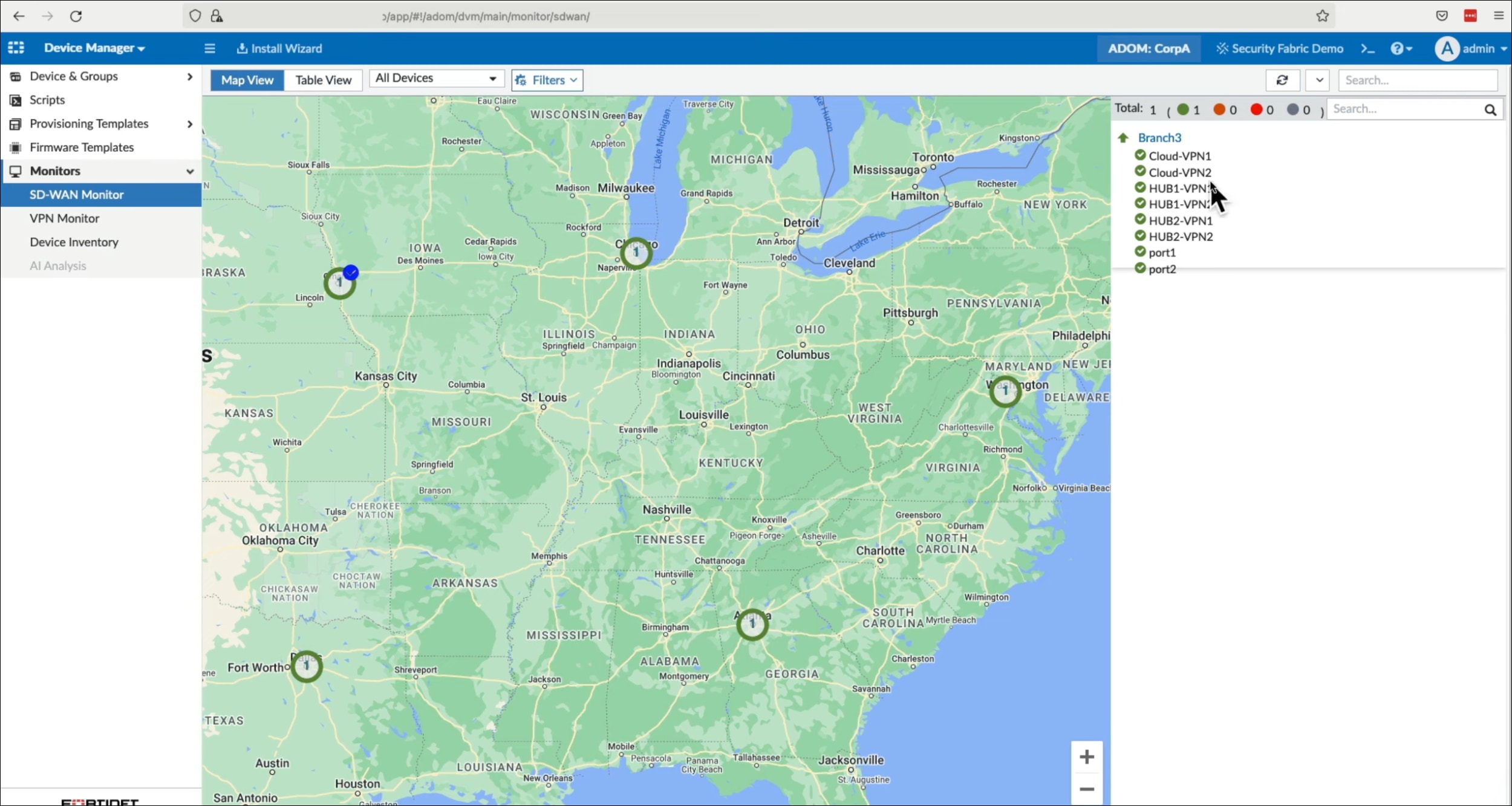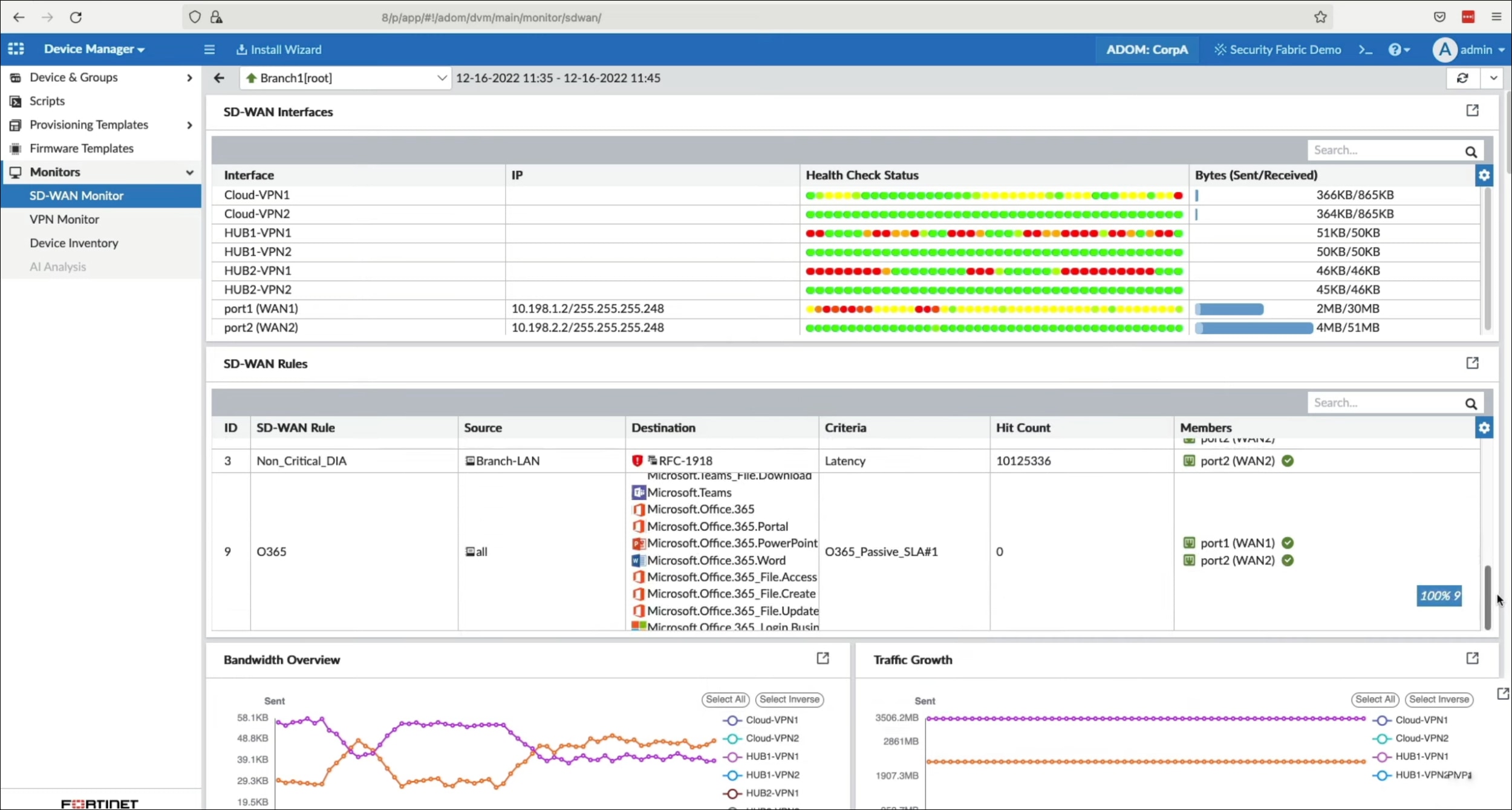Netify Review
There are two main products used by Fortinet to configure and deploy networks. FortiManager is the central management component with FortiAnalyzer providing logging, reporting across threat detection, data aggregation, compliance reporting, security automation and dashboards. This combination of both FortiManager and FortiAnalyzer combines to simplify monitoring and report generation by collating logs and telemetry.
Below: Fortinet's GUI showing all devices on an easy to read map.

I started the test by creating a dual-hub SD-WAN overlay using Fortinet’s user-friendly four-step wizard. The wizard was effective for creating full mesh connectivity using Fortinet’s ADVPN technology. The ADVPN approach resolves traditional scalability challenges associated with full mesh networks by creating dynamic tunnels rather than nailing up processing power required to mesh tunnels across sites.
Fortinet Zero-Touch Provisioning (ZTP) is made simply by using device blueprints. These blueprints offers templates and policy packages to help setup users and branch-offices with standard SD-WAN and SASE policies. The template capability significantly reduces the setup time to setup new devices configured as they configure themselves once connected.
The configuration of path selection and performance SLA health checks within the SD-WAN rules engine helps to understand how applications should perform across packet loss, latency and jitter. Fortinet active probes and passive measurements details accurate data to make failover decisions based on default or bespoke network policies.
Fortient ISDB and DPI are application databases designed for precise application management based on latency and jitter figures. The analytics help with fine-tuning across network performance for application steering and analytics.
Fortinet's multiple layers of security are created via the NGFW firewall policy (powered by FortiGuard Labs’ threat intelligence) to create the network's security. The Forti SASE integration extended these capabilities to remote users to secure internal resources via Fortinet SWG, DLP, and ZTNA.
Concluding the process was the integration of FortiSwitches and FortiAPs, managed under the FortiManager console to unify network and security management, which improves visibility and control over the network infrastructure.
Below: Fortinet's management portal used to check health status.

Fortinet's SD-WAN has evolved significantly over the years, with continuous updates and improvements to features and capabilities. The evolution of Fortinet's SD-WAN can be traced through the various versions of FortiOS - Fortinet continued to enhance SD-WAN capabilities. An example is FortiOS 7 where users have reported stability of the SD-WAN features and the potential benefits of upgrading to this version.

